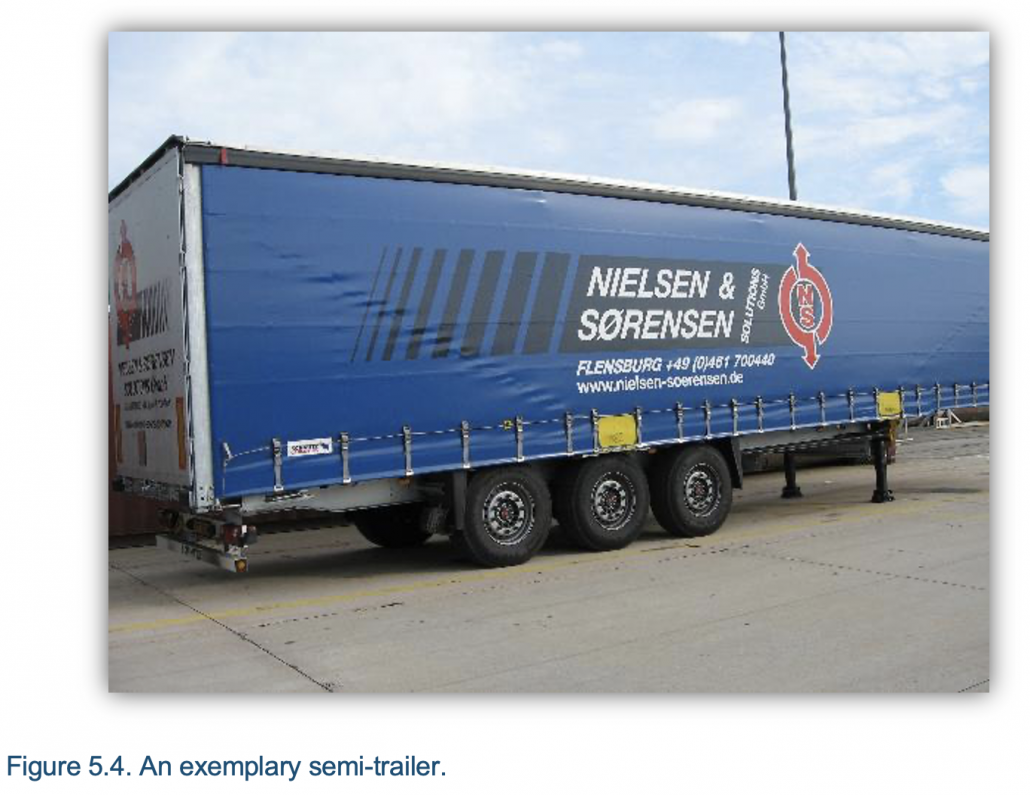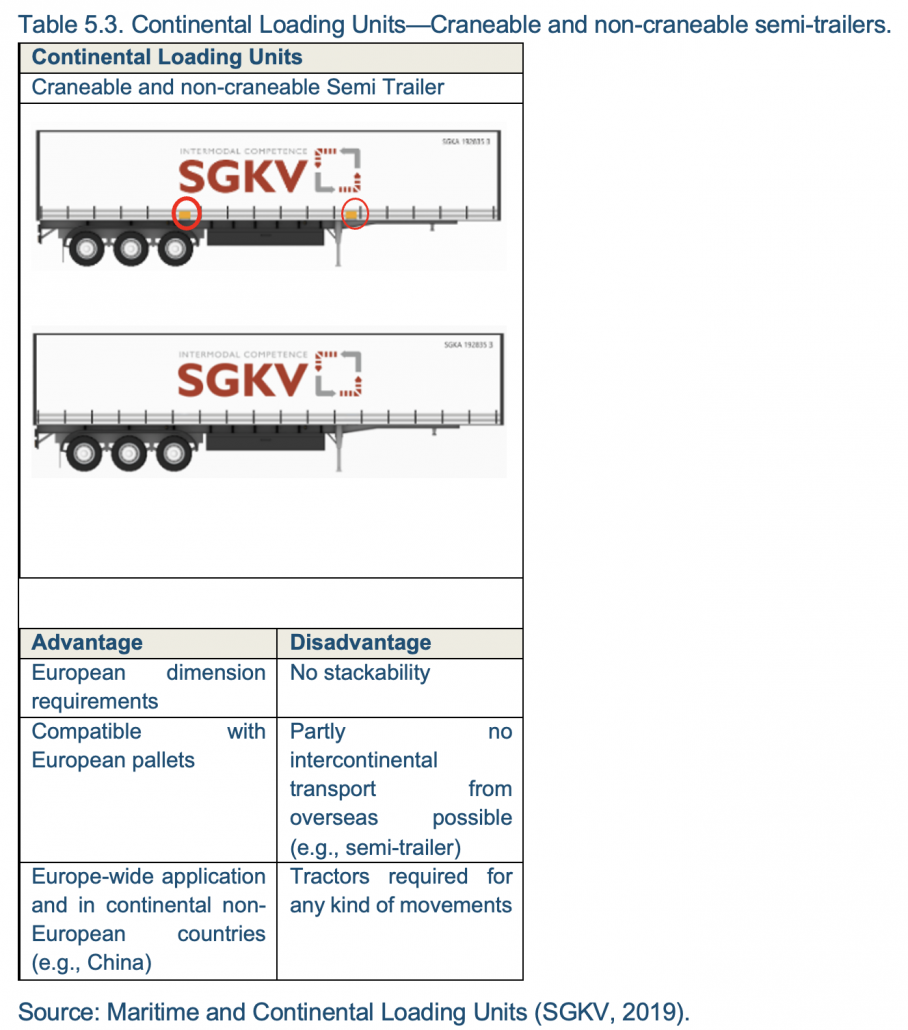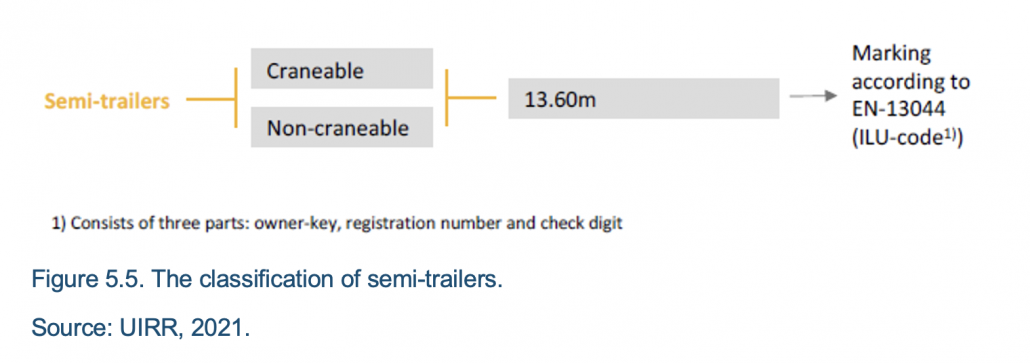In the BSR, the semi-trailer is the predominant ILU-type (58%), whereas on the European CT market, the market share for semi-trailers is 21% (Figure 5.4 and Table 5.3) (UIC, 2020).


The advantage of semi-trailers is that they can be coupled directly to a tractor and do not require a road chassis, unlike containers and swap bodies. However, they are more costly and heavier (UIC, 2015).
The classification of semi-trailers is represented in Figure 5.5 (UIC, 2020, source UIRR).

Craneable semi-trailers are utilized in CT (30% in total). However, approximately 70% of all semi-trailers are still non-craneable, most of which are standard non-craneable semi-trailers (UIC, 2020).
Semi-trailers are used in continental logistic chains due to their compatibility with Euro Pallets. However, the fact that only a fraction of semi-trailers is craneable, poses several challenges for utilizing them in combined transport. In addition, specific handling technologies are not common in European terminals, which in turn poses another bottleneck for unlocking the potential of continental CT. However, some innovative transshipment solutions are in operation also in the BSR (SGKV & UIRR, 2020). In order to achieve a further shift of freight traffic volumes off the road to rail or waterways, there is great potential in the use of innovative handling technologies for non-craneable loading units (ERFA KV, 2020).
The average technical transport lifetime for semi-trailers is 10 years and average age 7.4 years. According to 2020 Report on Combined Transport in Europe, interoperability for the modal shift of semi-trailers electrification is needed in the BSR (UIC, 2020).